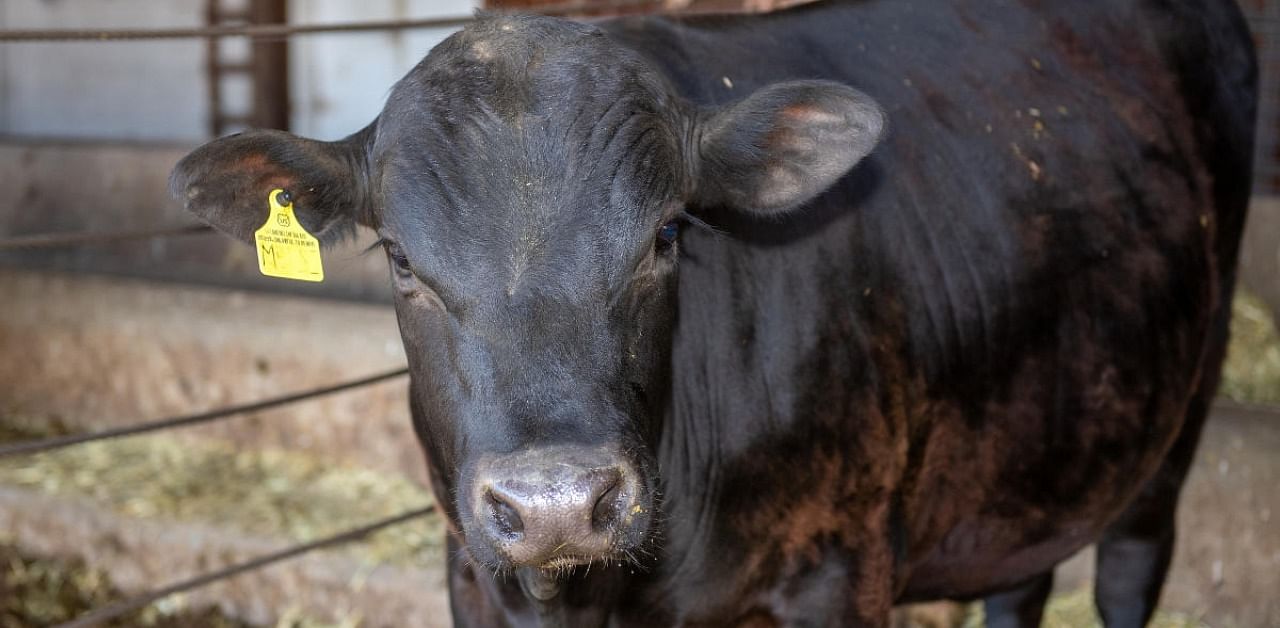
Scientists have created first gene-edited livestock that can serve as viable "surrogate sires" -- males that produce sperm carrying only the genetic traits of donor animals -- an advance that they say could improve food production for a growing global population.
The research, published in the journal PNAS, could speed the spread of desirable characteristics in livestock, and provide breeders in remote regions with better access to the genetic material of 'elite animals' from other parts of the world.
The advance would also allow more precision breeding in animals such as goats where using artificial insemination is difficult, the researchers said.
"With this technology, we can get better dissemination of desirable traits and improve the efficiency of food production. This can have a major impact on addressing food insecurity around the world," said Jon Oatley, a reproductive biologist at Washington State University in the US.
"If we can tackle this genetically, then that means less water, less feed and fewer antibiotics we have to put into the animals,” Oatley said.
The researchers used the gene-editing tool, CRISPR-Cas9, to knock out a gene specific to male fertility in the animal embryos that would be raised to become surrogate sires.
They produced mice, pigs, goats and cattle that lacked a gene called NANOS2 which is specific to male fertility.
The male animals grew up sterile but otherwise healthy, so when they received transplanted sperm-producing stem cells from other animals, they started producing sperm derived from the donor's cells, according to the researchers.
The surrogate sires were confirmed to have active donor sperm, they said.
The surrogate mice fathered healthy offspring who carried the genes of the donor mice, the researchers noted, adding that larger animals have not been bred yet.
The team is refining the stem cell transplantation process before taking that next step.
Scientists have been searching for a way to create surrogate sires for decades to overcome the limitations of selective breeding and artificial insemination, tools which require either animal proximity or strict control of their movement -- and in many cases, both.
Artificial insemination is common in dairy cattle who are often confined so their reproductive behaviour is relatively easy to control, but the procedure is rarely used with beef cattle who need to roam freely to feed.
For pigs, the procedure still requires the animals be nearby as pig sperm does not survive freezing well. In goats, artificial insemination is quite challenging and could require a surgical procedure, the researchers explained.
The new technology could solve those problems since the surrogates deliver the donor genetic material the natural way --through normal reproduction, they said.
This, the researchers said, enables ranchers and herders to let their animals interact normally on the range or field.
This technology has great potential to help food supply in places in the developing world, where herders still have to rely on selective breeding to improve their stock, said Irina Polejaeva, a professor at Utah State University in the US.
"Goats are the number one source of protein in a lot of developing countries. This technology could allow faster dissemination of specific traits in goats, whether it's disease resistance, greater heat tolerance or better meat quality," Polejaeva said.